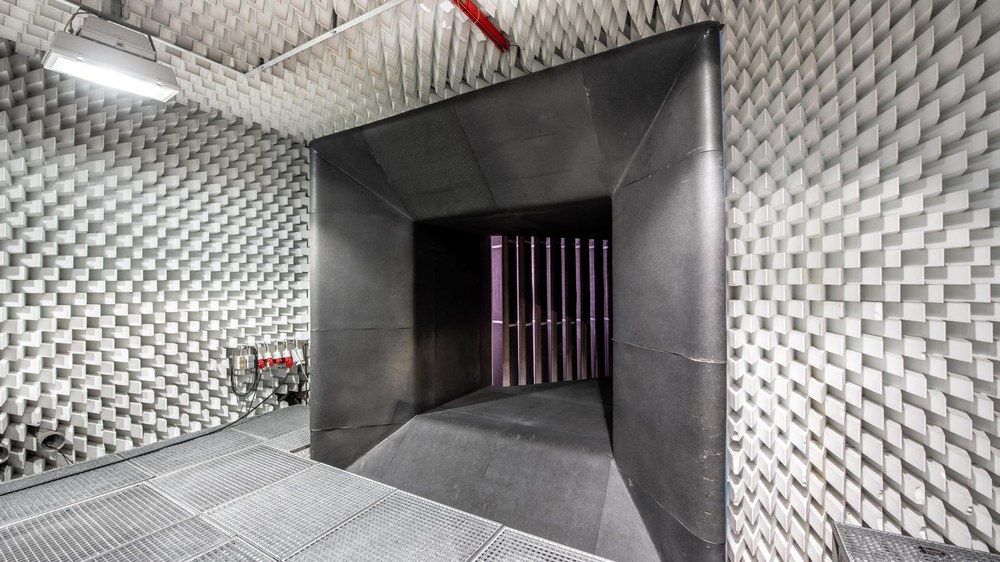Aeroacoustic Wind Tunnel Braunschweig (AWB)



Researchers in the Department of Technical Acoustics at the DLR Institute of Aerodynamics and Flow Technology in Braunschweig are investigating incident airflow sound sources in order to make both aircraft and wind turbines quieter.
Low-noise wind tunnel
Research into incident airflow noise sources and the development of noise reduction measures will play a major role in the design of future aircraft. Special testing facilities for flow acoustics studies are therefore required in order to be able to test the individual stages of development in this research project.
The AWB provides the German Aerospace Center (Deutsches Zentrum für Luft- und Raumfahrt; DLR) with a quiet wind tunnel that enables the very low-noise production of airflow at velocities of up to 60 metres per second. The sources of aerodynamically induced noise and their radiative properties can be measured in such airflows.
Its free flow passes through a large, low-reflection measuring chamber (with a lower frequency limit of about 200 hertz for broadband noise). The inlet nozzle has a rectangular cross-section of 1200 × 800 millimetres (height × width). An additional supply of compressed air enables the acoustic study of airflows and how they interact with wings. The aeroacoustic wind tunnel is equipped with a collector that makes it possible to completely absorb even highly deflected airflows (for example, those generated by high-lift devices).
Research tool for tracking noise
The system is unique in Europe in terms of its size, cost and aeroacoustic design, and serves mainly as an everyday research tool for the Department of Technical Acoustics at the DLR Institute of Aerodynamics and Flow Technology. Aeroacoustic studies are also being carried out as part of national and European funded projects. There is also the option of offering direct services to industry clients.
The primary purpose of the large-scale facility is therefore to determine noise source mechanisms, test out noise reduction concepts on components, and conduct validation experiments for new simulation and computation methods. Thus, the AWB provides a unique basis for special acoustic measurements, as well as making a highly effective addition to large wind tunnels.
